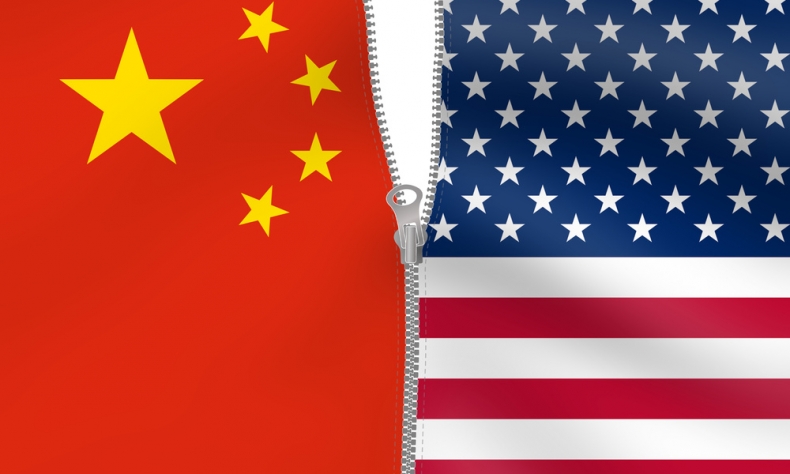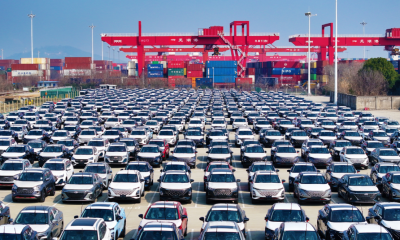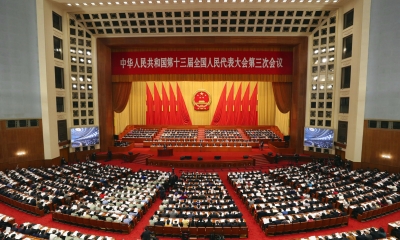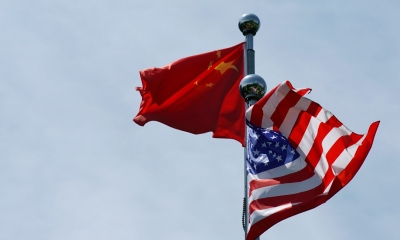Decoupling U.S. Economy from China Doomed to Failure

Keeping a sound and stable global supply chain will benefit not only China and America, but also the world at large.
Janet Yellen, U.S. Secretary of Treasury has realized the devastating consequences of decoupling U.S. economy from Chinese economy when she spoke at John Hopkins Institute on April 20, 2023.
Yellen said that “the United States will assert ourselves when our vital interests are at stake. But we do not seek to decouple our economy from China’s. A full separation of our economies would be disastrous for both countries. It would be destabilizing for the rest of the world.”
A couple of days earlier, Ursula von der Leyen, Chairman of European Commission, also made it clear that Europe cannot decouple from China. She was supporting the earlier remark by Emanuel Macron, the French president, on firm opposition to decoupling from China.
The initial results of U.S. economy decoupling from China have emerged. The U.S. official trade data shows that during the first two months of 2023, there was a sharp geological shift of its goods import sources. The U.S. global imports, at $485.23 billion, grew only 0.5 percent over a year ago ($482.91 billion), or a net increase of $2.31 billion. However, there were sharp increases from Canada and Mexico, up $10.45 billion, and from EU, up $14.07 billion. Or up $24.46 billion from North America and trans-Atlantic region. Trans-Pacific area, the largest source of U.S. imports, fell by $22.28 billion. China accounted for $21.23 billion of the total loss. However, the rest of trans-Pacific area failed to make up the loss. The U.S. imports from Japan, Vietnam, China’s Taiwan, Malaysia, the Philippines and Indonesia had a total net fall of $3.22 billion, almost equals the net gains in its imports from South Korea, India, Thailand and Singapore (total net increase of $3.54 billion). Trans-Pacific area used to be the largest and vital import source of a wide range of intermedia goods for America. The weakening of trans-Pacific supply means the fragmentation of global supply chain, which will hit the U.S. badly and is thus hardly sustainable. China’s export to the U.S. saw a clear rebound in March 2023 and is most likely to continue.

The U.S. decoupling from China maneuver has been escalating since Joe Biden took office in the White House. U.S. and EU launched the transatlantic Trade and Technology Council (TTC) in June 2021 and have since had three meetings. The objective of TTC is to realign the supply chain based on “shared values” and “democracy”, and set up global standards and rules on semiconductors and other high technology, thus to “deny China”(Gina Raimondo). The Chip and Science Act prohibits investors from investing in China for 10 years to qualify federal government financial subsidies. The Inflation Reduction Act also bans key minerals from China. In October 2022, USDOC announced a sweep ban or restrictions on exporting chips of 14 nm and above, semiconductor manufacturing equipment, and design software to China. During the same period, the Biden administration has been pressing Chip 4 alliance excluding China and has hit a tripartite agreement among U.S., the Netherlands and Japan on DUV stepper supply ban to China.
The fervent decoupling efforts, however, has also failed to cut China off the global chips supply chain. A report by Boston Consultants Inc. showed that the ban on China’s tech giant Huawei had cut the American semiconductor industry revenue by 48 percent. The chip manufacturing equipment ban had cut its export to China by half. From 2017 to 2021, the largest 11 American semiconductor companies increased their sales in Chinese market by 52.2 percent, from $56.17 billion to $85.48 billion. In 2021, the semiconductor equipment maker Applied Materials sales to China increased by 174.4 percent year-on-year to $7.54 billion. Undoubtedly, they will not leave China. Jimmy Goodrich, vice president of Semiconductor Association of America, has said that American semiconductor industry will continue to cooperate with China. The annual meeting of China Semiconductor Industry, opened in Guangzhou on April 18, attracted leading chip makers of America, Europe and Japan. Ironically, the leading sponsors were Applied Materials and other American chip companies.

A report by Patrick McGee of Financial Times, titled “How Apple tied its fortunes to China”, found that Apple has no other choice but to keep most of its manufacturing operations in China. China seems to be the only solution. A report by Bloomberg put it more bluntly: “Leave China? Don’t bother.”
China accounts for one third of the world semiconductor market, also for roughly one third of global sales of American semiconductor companies. If the U.S. lose Chinese market, American semiconductor industry will no longer be the world’s largest. The loss of one third sales revenue will reduce American companies’ R&D investment, and in turn, it will be difficult to keep their leading position in technology advantages, which is a fatal threat to their future. Therefore, the semiconductor decoupling, already showing signs of unsustainability, will fail in the end.
China, on the other hand, keeps its open-door policy and opens its arms for trade and investment cooperation with others, including American industries and businesses. The global supply chain is based on the global distribution of materials, technology, capital, labor and markets and thus cannot be altered by political motives. It is highly anticipated that, Chinese and American industries, especially semiconductor and other high-tech industries, will continue to cooperate and collaborate in the future. Thus, keeping a sound and stable global supply chain will benefit not only China and America, but also the world at large.
The article reflects the author’s opinions, and not necessarily the views of China Focus.
 Facebook
Facebook
 Twitter
Twitter
 Linkedin
Linkedin
 Google +
Google +







